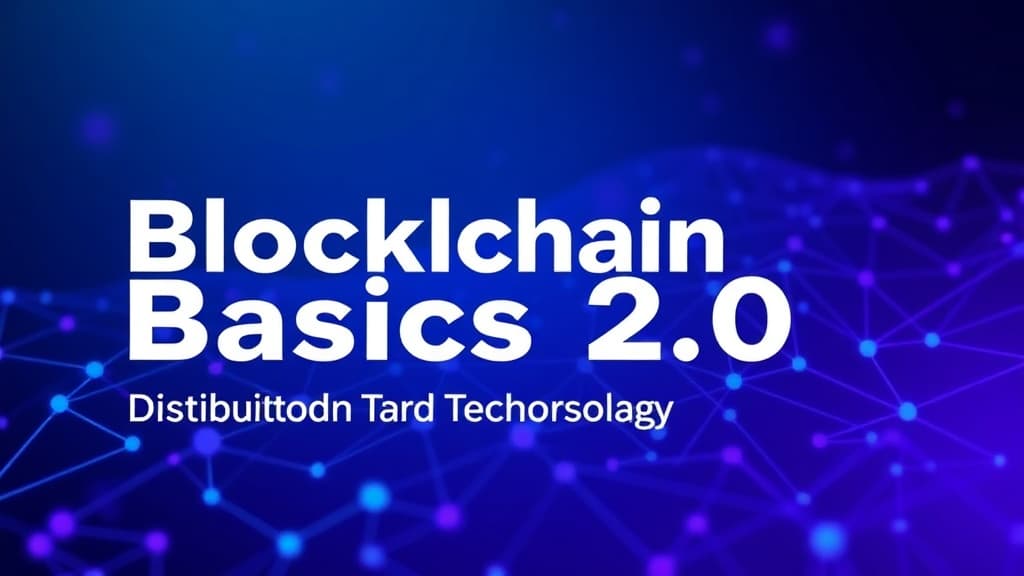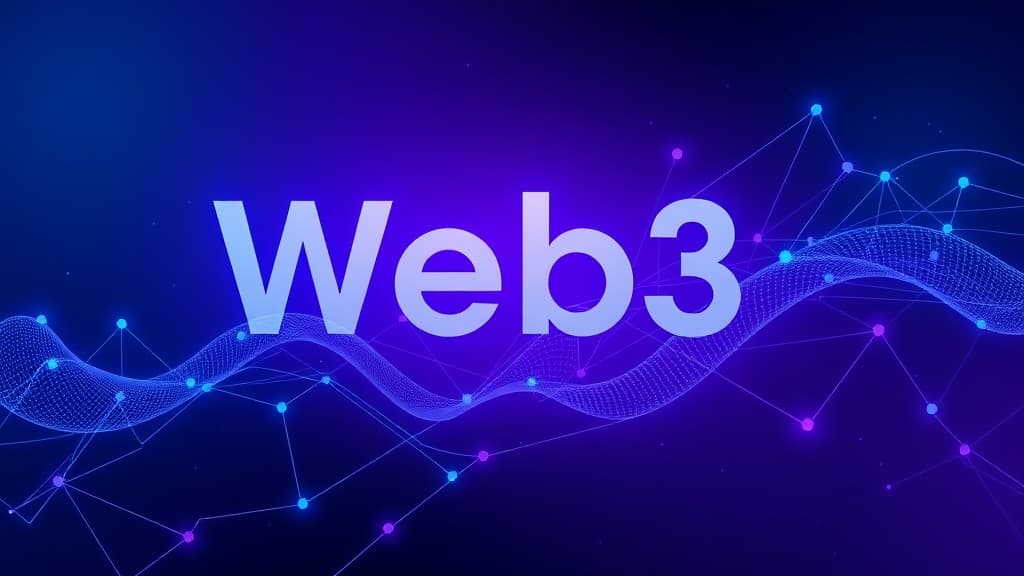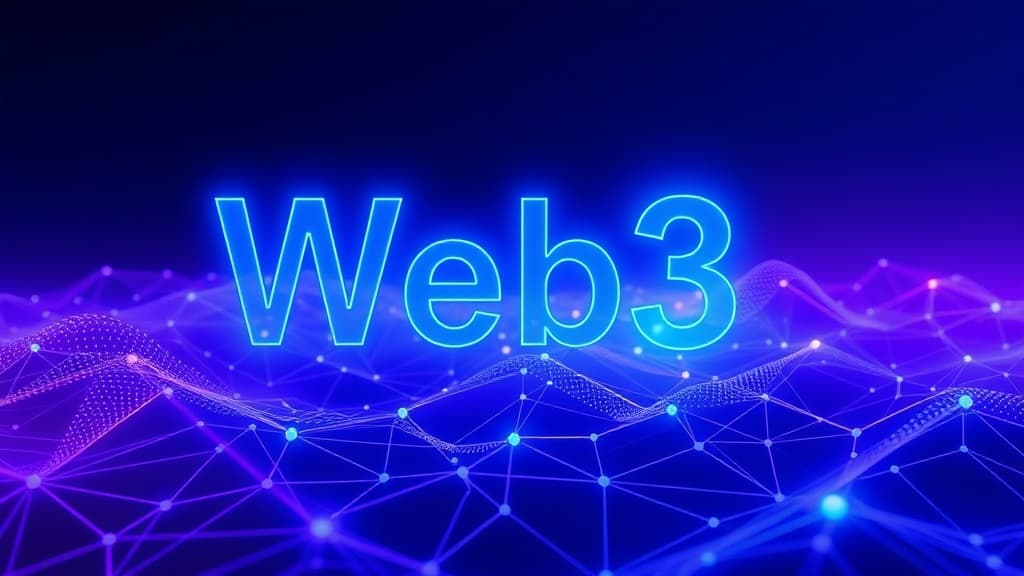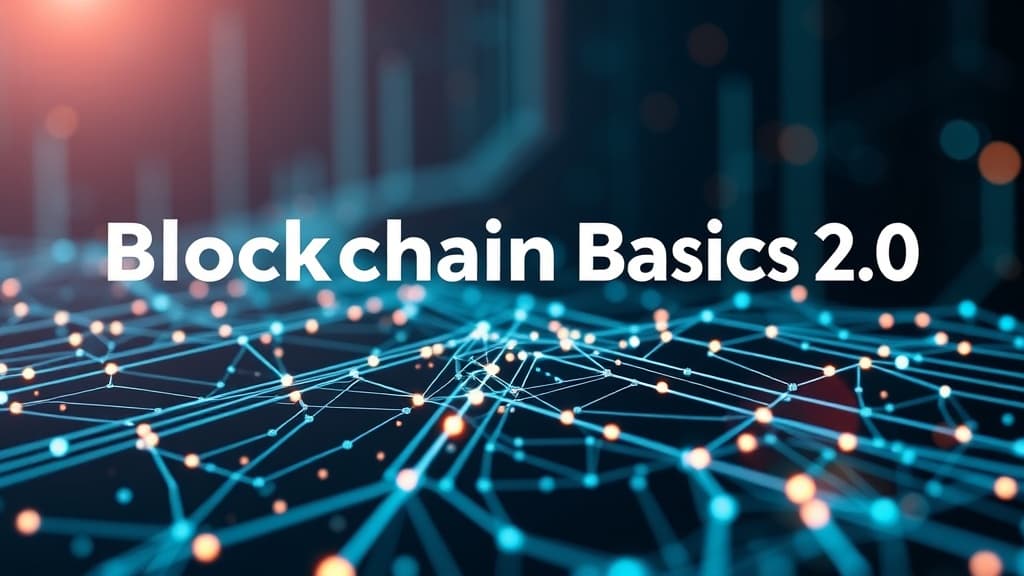Blockchain Basics 2.0: Unpacking the Evolution of Distributed Ledger Technology

Blockchain Basics 2.0: Unpacking the Evolution of Distributed Ledger Technology - Technology analysis and insights
Explore the exciting evolution of blockchain technology, from its core components to the latest trends that are shaping its future. Discover how it's revolutionizing industries and address key elements like interoperability, sustainability, and regulation.
Blockchain Basics 2.0: Unpacking the Evolution of Distributed Ledger Technology
Introduction
When you think about the term blockchain, what comes to mind? Is it Bitcoin, Ethereum, or maybe the latest NFT craze? While those are certainly part of the conversation, blockchain technology goes far beyond just cryptocurrencies. It’s a fascinating world of decentralized systems that’s evolving at a breakneck pace. As we delve into the current landscape of blockchain—let's explore what it is, where it’s heading, and how it’s transforming our daily lives.
What is Blockchain Technology?
Simply put, blockchain is a decentralized, distributed ledger that securely records transactions across numerous computers. This setup makes any attempt to alter past transactions nearly impossible. It’s like an open diary that everyone can read but no one can rewrite.
Core Components of Blockchain
- Nodes: These are the computers that maintain the blockchain. Each node has a copy of the entire ledger, ensuring transparency. - Consensus Mechanisms: This is how nodes agree on the validity of transactions. You might've heard of Proof of Work and Proof of Stake; both have their pros and cons. - Cryptographic Hashing: This is the process that ensures data integrity. Each block contains a unique hash, making it impossible to tamper with without altering every subsequent block. - Smart Contracts: These are self-executing contracts with the terms written into code. They automate processes and reduce the need for intermediaries.Types of Blockchains
Blockchains can be classified into three main categories: 1. Public Blockchains: Open to anyone, like Bitcoin and Ethereum, where anyone can participate in transaction validation. 2. Private Blockchains: Restricted access, often used by companies for internal purposes. Hyperledger is a prime example. 3. Federated Blockchains: A hybrid of public and private, these are controlled by a group of organizations, like R3 Corda.Recent Trends and Developments
As of October 2025, blockchain is not standing still; it’s racing forward with exciting innovations.Interoperability Solutions
Have you ever wished that different blockchains could communicate seamlessly? Projects like Polkadot and Cosmos are making that wish come true. They’re creating bridges between blockchains, enhancing the functionality of diverse ecosystems. Imagine a world where assets can flow freely between Ethereum and Bitcoin without any hassle. We’re getting there!Layer 2 Scaling Solutions
Scalability has been a significant concern for blockchain networks. But don’t worry, innovative Layer 2 solutions like the Lightning Network for Bitcoin and Optimistic Rollups for Ethereum are here to help. These technologies offload transactions from the main blockchain, speeding up processing times and reducing costs. In fact, Ethereum's recent implementation of zk-Rollups has been a game changer for their network congestion.Green Blockchain Initiatives
With climate change at the forefront of our conversations, blockchain's energy consumption has come under scrutiny. Ethereum's transition to Proof of Stake in September 2022 was a pivotal moment. This shift has drastically reduced energy usage and showcased the potential for eco-friendly blockchain alternatives. Many projects are now prioritizing sustainability, proving that you can be innovative without harming the planet.Regulatory Evolution
As blockchain continues to grow, so does the focus of regulatory bodies. The European Union's MiCA (Markets in Crypto-Assets) regulation is set to fully take effect in 2026. This framework aims to standardize regulations across EU member states. It’s essential for building trust and stability in the crypto market, providing clear guidelines for both companies and consumers.The Numbers Don't Lie
Blockchain is not just a trend—it’s a booming market. Here are some statistics to keep in mind: - The global blockchain market was valued at approximately $67 billion in Q3 2025, with projections reaching $163 billion by 2028. - According to a PwC survey conducted in 2025, 60% of companies plan to adopt blockchain technology within the next three years, showcasing its growing acceptance across various sectors. - Bitcoin's transaction volume skyrocketed to 350 million in 2025, affirming its dominance in the cryptocurrency space.Real-World Applications of Blockchain
Let’s talk about the impact of blockchain on our everyday lives. Here are a few sectors where it’s making waves: - Supply Chain Management: Companies are using blockchain to trace products from origin to consumer, ensuring transparency and reducing fraud. - Healthcare: Blockchain can securely store patient records, making it easier to share information among healthcare providers while maintaining patient privacy. - Finance: From decentralized finance platforms to cross-border payments, blockchain is revolutionizing how we think about money.The Role of Governance in Blockchain
Governance is a critical aspect of blockchain projects. It determines how decisions are made and how communities stay engaged. Different projects have various governance models—some are more centralized, while others embrace complete decentralization. Understanding these models can give insights into the project’s future and its community’s health.Security and Privacy Considerations
No technology is without its flaws. Blockchain is often hailed for its security, but recent hacks and vulnerabilities remind us to stay vigilant. Cybersecurity is an ongoing battle, and projects must prioritize developing robust security measures to protect user data and funds. The rise of decentralized identity solutions is one way blockchain is addressing security and privacy challenges.Conclusion
Blockchain technology is more than just a passing phase—it’s a transformative force reshaping industries. From enhancing transparency in supply chains to creating eco-friendly solutions, its applications are vast and varied. As we look ahead, it’s clear that blockchain is not just a technology for tech enthusiasts. It’s something that can benefit everyone, everyday people included. So, whether you’re a seasoned investor or just curious about this digital ledger, keep an eye on the evolving landscape. The future promises to be exciting, and we’re all part of this journey.Educational Content Only — Not Financial Advice
This article provides educational information only and does not constitute financial, investment, trading, or legal advice. Cryptocurrency investments carry significant risk, including the potential loss of principal. Always conduct your own research and consult with licensed financial professionals before making investment decisions. Past performance does not guarantee future results. CryptoLumos and its authors assume no liability for financial decisions made based on this content.
Related Articles
Continue exploring more insights

Decentralization Reimagined: The Future of Autonomous Economies in Web3
As we stand in October 2025, Web3 isn't just a buzzword; it's a thriving ecosystem that's already changing lives. From DAOs to interoperability, let's explore how decentralization is reshaping our digital future.

Web3 in 2025: How Decentralization is Reshaping Our World
Web3 is no longer just a buzzword; it's a reality that's reshaping industries and empowering individuals. Discover how decentralized technologies are changing our world in 2025.

Web3: The Internet's New Frontier of Freedom and Innovation
Web3 is transforming the digital landscape by empowering individuals with ownership and decentralization. From DeFi's growth to the rise of DAOs, discover how this new era is reshaping our online interactions and financial systems.
Image Gallery



Comments
Share your thoughts and join the discussion
Leave a Comment
No comments yet
Be the first to share your thoughts!